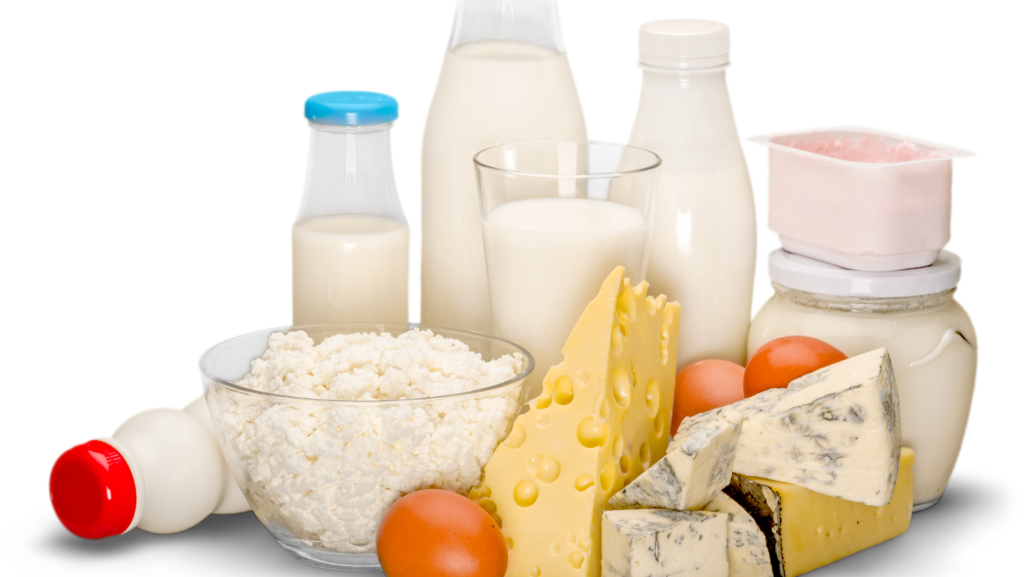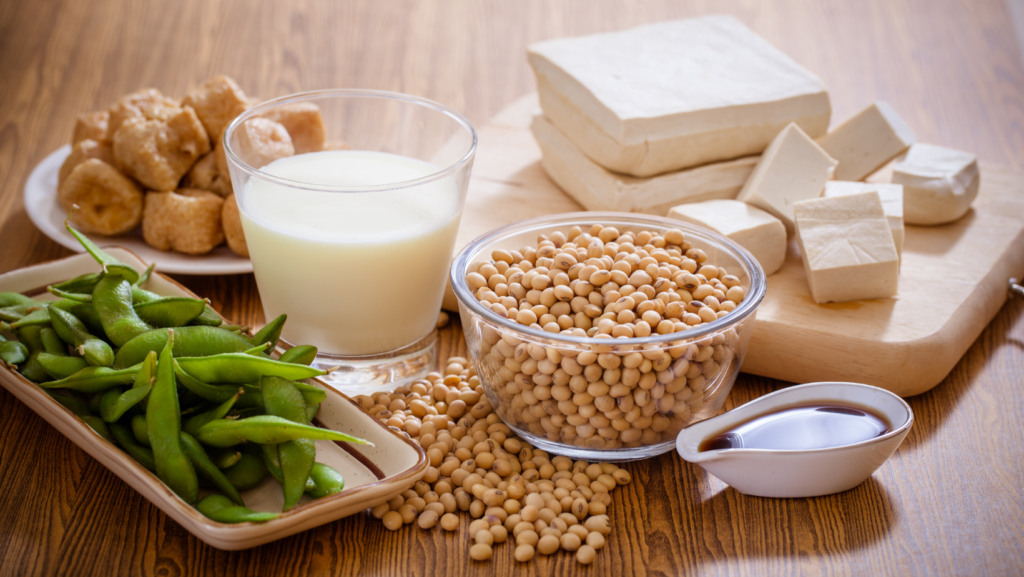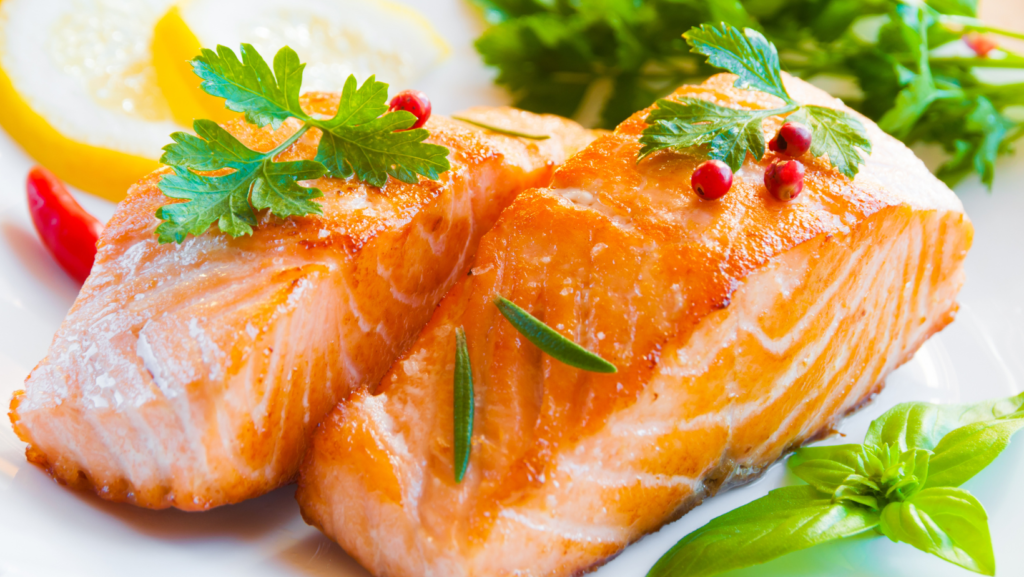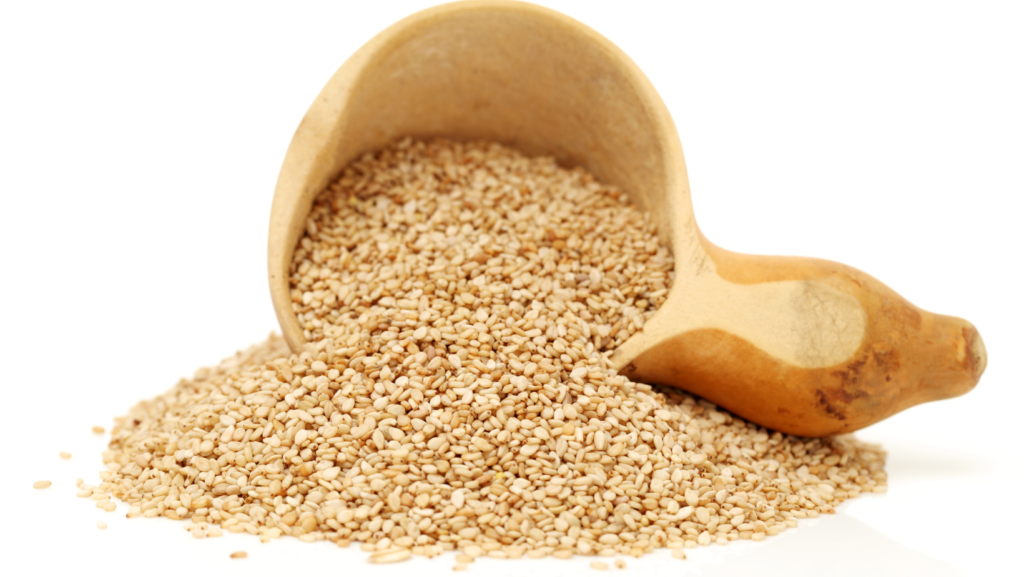How to Introduce Top 9 Allergens



Some of the links below are affiliate links. At no additional cost to you, I will earn a commission if you click through and make a purchase.
Are you worried about introducing allergens?
Introducing solids can be an exciting but scary milestone, especially when you are worried about food allergens (and there are 9 of them you need to pay special attention to)!
The top 9 food allergens are:
- Dairy products
- Egg
- Peanut
- Soy
- Wheat
- Tree nut
- Shellfish
- Fish
- Sesame
This post will guide you in how to introduce these food allergens to your baby, specific food ideas for each allergen, and some tips to help you along the way.
Disclaimer: We highly recommend discussing the introduction of allergens with your pediatrician before introducing them, especially if you have a family history of food allergies or if your child has eczema.
Research and Guidelines on Introducing Allergens
There is a growing body of evidence that early introduction of foods such as peanuts, fish, and eggs (at an appropriate age) might actually be beneficial in preventing food allergy, and that delaying food introduction might contribute to allergic disease.
- In 2008, the American Academy of Pediatrics made changes to its previous recommendations by stating that although solid foods should not be introduced before 4 to 6 months of age, there was no convincing evidence that delaying their introduction beyond this period was protective against allergy.
- “Dietary Exposures and Allergy Prevention in High-Risk Infants,” from the Canadian Paediatric Society and the Canadian Society of Allergy & Clinical Immunology statement suggests that there is no benefit to delaying the introduction of any potentially allergenic food such as milk, eggs, peanuts, or fish beyond 6 months of age to prevent food allergy.
- New guidance from leading medical organizations – the American Academy of Allergy, Asthma, and Immunology (AAAAI), the American College of Allergy, Asthma, and Immunology (ACAAI), and the Canadian Society of Allergy and Clinical Immunology (CSACI) – recommends that in order “to prevent peanut and/or egg allergy, peanut and egg should be introduced around 6 months of life, but not before 4 months”.
The newest guidelines recommend continuous exposure to food allergens at least three times per week. Start with one allergen at a time and continue to expose your child to them on a weekly basis.
How to Introduce Allergens:
Introduce the top 9 allergens one at a time to evaluate for any potential reactions. It is important not to offer two top allergen foods on first exposure at the same time.
The American Academy of Pediatrics (AAP) and current research supports introducing allergens when babies begin complementary foods around six months, and no later than 11 months. Early and regular dietary exposure to these foods may actually help reduce the risk that the child will develop food allergies.
If you have a family history of serious food allergies or food sensitivities, talk to your pediatrician before introducing allergens!
Some ways to introduce allergens include:
- Nut and seed butters can be mixed in oatmeal, grits, or purees
- You can use SpoonfulOne or Lil Mixins products to mix into breast milk, oatmeal, or purees
- You can also introduce top allergens using whole foods like scrambled eggs or toast. Offer a small amount and monitor.
- Puffs containing allergens are another option too!

Dairy: yogurt, cheese, or milk in baked foods
Did you know if your child is on a cow’s milk-based formula they are already being exposed to cow’s milk/dairy? You can opt to do other forms of cow’s milk (i.e., yogurt or cottage) after introducing other allergenic foods! Please wait to introduce liquid cow’s milk until age 12 months.
Tips:
- Choose whole milk yogurt without added sugar
- Choose low sodium cheeses like ricotta, goat cheese, and Swiss
Other options:
- Allergy powders that can be mixed into cereal or breast milk/formula
- Beware that if you are using powders containing multiple allergens and your child does have a reaction, you won’t know which allergen the child is reacting to due to multiple allergen exposure.

Eggs: fully cooked or baked eggs (such as scrambled eggs, omelets, or recipes that include eggs in muffins or pancakes)
Did you know the most allergenic part of an egg is egg white? The white is where the protein is, but the yolk is also important for a baby’s development. Some of the proteins in egg white are sensitive to heat so baking with egg makes it less allergenic.
Tips:
- Do not serve undercooked eggs. No soft boiled, poached, or raw egg powder.
- Undercooked eggs are not recommended for children younger than 1 year.
Other options:
- Lil Mixins brand has a baked egg only powder that you can use to mix in with breast milk, formula, or purees and cereals to help with consistent egg exposure.

Soy: soy yogurt, tofu
Introducing soy to your baby may sound easy, after all, soy appears to be in almost everything. However, please remember that an allergy to food often occurs to the protein component of that food.
Soy lecithin and soybean oil do not contain enough protein to be considered enough of an allergen exposure. Soy sauce also does not have enough protein and in fact, contains too much salt. To introduce soy, consider whole food options, such as tofu, edamame, soy milk, and soy-based yogurts.
Tips:
- You can introduce soy in the form of soy milk, but that should only be used as an introduction method in small amounts. Soy milk is not an appropriate substitution for breast milk or formula, and should not be regularly provided until the child is over the age of one.
- You can use soy milk in baked goods to introduce this allergen, similar to how you would use cow’s milk in baked goods to introduce dairy.
- Choose unsweetened soy milk and soy yogurts when possible!

Fish/Shellfish: any low-mercury fish, shredded fish on preloaded spoon, mashed and mixed with avocado and spread on bread, fish meatballs, burgers, or patties
Note: Finned fish and shellfish are two SEPARATE allergens. Both types of fish should be introduced early and often when starting solids for allergy prevention.
Finned fish is referring to fish such as salmon, cod, and sardines. Shellfish are shrimp, crab, and lobsters.
Tips:
- There are more than 700 species of fish and shellfish! It is therefore impossible to give them all to your baby just to be able to tick the “fish allergen box”. So, give your baby a few portions of the fish or shellfish species that you tend to eat the most as a family and continue with regular intake.
- The FDA doesn’t recommend more than 2 portions of fish per week.
- Remember to choose low mercury fish like salmon, sardines, catfish, halibut, Alaska pollock, anchovies, herring, cod, lobster, and skipjack tuna.
- You can also purchase brands like Wild Planet and SafeCatch who test their canned fish to make sure they are low in mercury!
- Make sure to avoid serving fish that contain bones or skin which can be a choking risk.

Sesame: hummus and tahini
Sesame seed allergy is unfortunately on the rise. Sesame seed oil and sesame seeds themselves are often found in foods and not an adequate exposure to the sesame protein.
The best source is ground-up sesame seed such as found in tahini paste or hummus. Consider blending it in with fruits/vegetables or in a smoothie.
Tips:
- Avoid serving whole sesame seeds which are considered a choking hazard for young children.
- You can offer hummus dipped in cucumbers or crackers, or a thin layer spread on toast.
- If purchasing pre-made hummus or tahini, try to find one with low sodium and no added sugar.
- You can easily make your own hummus at home as well! Here’s a simple recipe:
Simple Hummus Recipe:
- 1 can no-salt or low-sodium garbanzo beans, drained and rinsed
- ⅓ cup tahini
- ¼ cup EVOO or avocado oil
- ¼ cup water
- 2 tsp garlic powder
- ¼ tsp cumin
- 1 lemon, juiced
Directions: blend all ingredients together in a food processor until smooth.

Wheat: soft cooked pasta, wheat cereals, toast, and baked goods
Tips:
- Warm wheat farina cereal or any multigrain fortified infant cereal can be a good starting place when introducing wheat.
- Wheat is the main ingredient of many foods, such as bread, chapattis and naan bread, breakfast cereals, biscuits, crackers, crumpets, scones, pancakes, wafers, cakes, pizzas, pasta, and pastries.
- Any product that contains these words contains wheat: bran, bread crumbs, bulgur, couscous, durum, farina, flour (enriched, graham, high-gluten, high-protein, whole-wheat), matzoh, matzoh meal, pasta, seitan, semolina, spelt, wheat berries, etc.
- Avoid purchasing bread with whole seeds or nuts, which can be a choking risk.

Peanuts: nut butter mixed into cereals, peanut butter puffs, or peanut butter powders
The National Institute of Allergy and Infectious Diseases (NIAID) developed guidelines for early peanut introduction endorsed by the AAP. This includes adding infant-safe forms of peanut to the diet for most babies, as early as around 6 months, after other solid foods are tolerated.
Families with babies at high risk for peanut allergies (due to family allergy history and/or severe eczema) should introduce peanuts into their baby’s diet at 4-6 months.
Tips:
- Whole peanut kernels and chunks of peanut butter are potential choking hazards and should not be given to children younger than 4 years.
- Peanut-containing products, such as powders, flours, and snacks, have been used as safe forms of peanuts for infants.
- Choose natural peanut butter without added sugar or salt when purchasing. Thinned, natural peanut butter or peanut flour is preferred as a weaning food.

Tree nuts: finely ground nuts, nut powders, or nut butters mixed into cereals, nut flours used in baked goods or mixed into yogurt
Tips:
- Tree nuts include almonds, brazil nuts, cashews, hazelnuts, Macadamia nuts, pecans, pistachios, and walnuts.
- When introducing tree nuts, incorporate almond, cashew/pistachio, hazelnuts, and walnut/pecan into your baby’s diet since these are the most commonly ingested tree nuts.
- Finely ground tree nuts can be sprinkled on top of purees for early allergen introduction.
- Choose natural tree nut butters without added sugar or salt when purchasing. Thinned, natural tree nut butter or tree nut flour is preferred as a weaning food.
- Tree nut powders, flours, or finely ground tree nuts can also be mixed into yogurts if dairy has already been ruled out as an allergy.
Common Questions:
Do we need to wait 3-5 days between allergen introduction?
Even with top allergens, there is no evidence to wait 3-5 days between allergen introduction!
Most pediatric allergists report that an allergic reaction will occur within minutes to two hours after the child has consumed the said allergen. Most allergic reactions will occur within the first 2 exposures to an allergen. Thus, there is no reason to wait 3-5 days between introducing new allergens for you to know if they are allergic or not.
Allergists agree that most babies will not have a severe anaphylactic response to their first exposure to an allergen, but if you are concerned, always discuss it with your pediatrician.
Real food vs powders?
You can choose to introduce all of the top 9 allergens through real food, or you can use the allergen powders that are available for purchase from several national companies.
One thing to consider when making this decision is when you will be introducing allergens. If you are introducing starting at 4 months, when purees are most appropriate, powders may worst best. If you are introducing at six months, then finger foods are an acceptable way to introduce allergens.
“Real food is the preferred source of allergen exposure. The LEAP study, which showed that early allergen exposure is key for allergy prevention, used real food as the means of introducing peanuts and not powders or supplements. You do not have to start introducing allergens any earlier than when your child is showing signs of readiness (around six months) unless your child has a high risk for developing allergies (as explained above).” -Ron Sunog, MD
If you choose to use powders as the first introduction of allergens, know that it is most effective to sustain introduction several times a week, for months to years. We recommend switching to offering your child exposure to top allergens (as long as no reaction occurs) through developmentally appropriate real food as soon as possible.
___________________________________________________________________________________________________________________________________________________
Need more help? Grab our baby-led feeding cookbook or join our digital membership group.

If you need additional support and even more detailed information and tips for introducing top 9 allergens from a pediatric dietitian and starting solids expert, join my self-paced Starting Solids 101 Course

Cinthia Scott is a Registered Dietitian (RD) and International Board Certified Lactation Consultant (IBCLC) , with over 10 years experience in the field of dietetics. Cinthia focuses on ensuring optimal nutrition in the first 1000 days of life to ensure optimal growth and development as well as set the stage for long-term health. Cindy is an author, starting solids expert, and advocate for caregivers receiving evidence based education and support surrounding breastfeeding and starting solids.
Cinthia is co-author of the 101beforeone Starting Solids Book, “101beforeone -baby-led feeding cookbook,” and is the founder and owner of The Baby Dietitian LLC which is her private practice built to provide virtual 1:1 services for caregivers surrounding infant nutrition, toddler nutrition, and breastfeeding support. Cinthia is also the creator of the Starting Solids 101 Program which provides caregivers 1:1 support from a Pediatric Dietitian on how to provide optimal nutrition from the start and create healthy eating habits that will last their whole lifetime. To work with Cinthia, you can access her services here.
Cinthia provides tons of free information for parents on her social media accounts as well.
- Instagram: @The.Baby.Dietitian
- Tiktok: @The.Baby.Dietitian

One Response